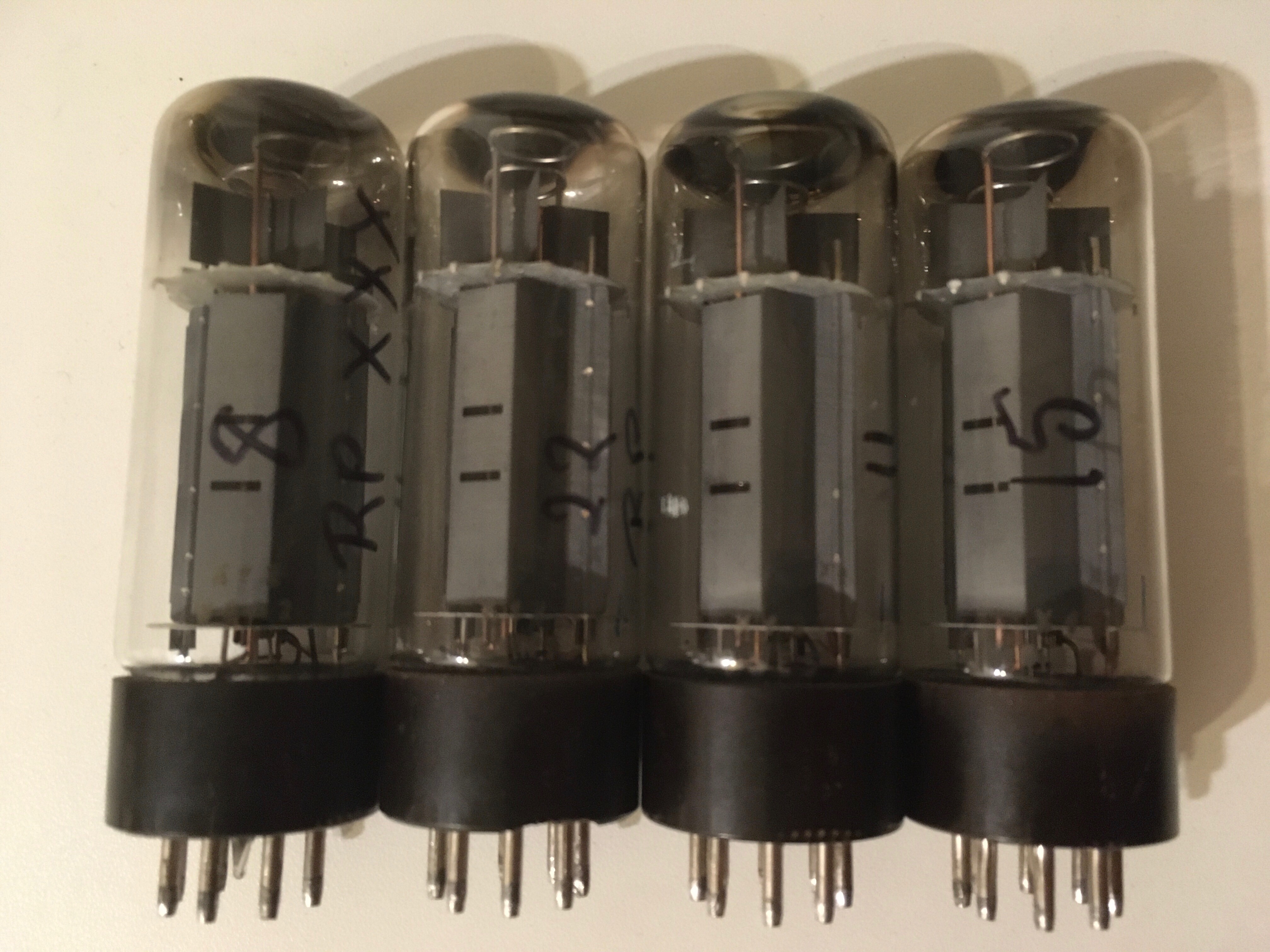These (matching date code) Valvo branded duet been have in my JMP50 for around two months, so haven't yet seen a lot of use.
I did have to clean a little dust etc off them before taking the pic. Date codes B2J3 (Blackburn, 1962, October, 3rd week).
By coincidence, of all the single halo getter xf2 duets I have, the only "matching date code" duet (Philips Miniwatt branded) has the same B2J3 date code. The "2" in this instance showing 1972 manufacture.

These have been serving in my black
flag JTM50 type build. Pic is an old one.
One question I'd like to ask is what % of max plate dissipation people bias these (Mullard) EL34's to? I find I like them down toward 60% in my 50 watters. Cheers

I did have to clean a little dust etc off them before taking the pic. Date codes B2J3 (Blackburn, 1962, October, 3rd week).
By coincidence, of all the single halo getter xf2 duets I have, the only "matching date code" duet (Philips Miniwatt branded) has the same B2J3 date code. The "2" in this instance showing 1972 manufacture.


These have been serving in my black
flag JTM50 type build. Pic is an old one.
One question I'd like to ask is what % of max plate dissipation people bias these (Mullard) EL34's to? I find I like them down toward 60% in my 50 watters. Cheers
Last edited:





